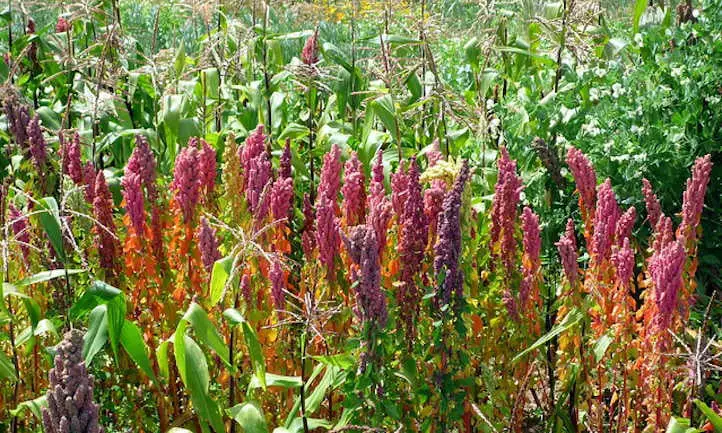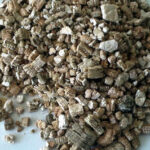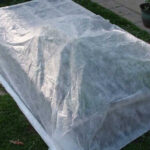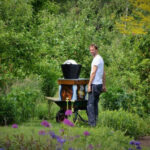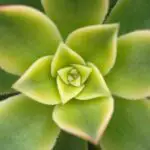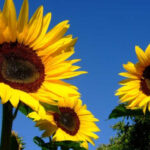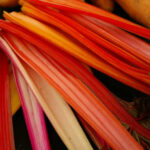Quinoa, although it is often categorized with grains, is a seed crop native to South America. It falls under the goosefoot family (Chenopodium), which includes weeds like lambs quarters, swiss chard, and sugar beet. The seeds and leaves of a happily-growing quinoa plant are edible. Its seeds are treated like a grain in cooking and the leaves are used like spinach.
Quinoa plants are showy with a botanical structure like amaranth and can grow very tall even in conditions that lack fertilizer or comprehensive irrigation. Many different species make for an array of colors in seed clusters, stalks, and leaves. Plants grow anywhere from one and a half feet tall all the way up to nine feet tall. Quinoa is a great colorful addition to your garden as a barrier, or shade for ground cover.
It’s a wonder we have quinoa today. Conquistadors who landed in South America in the 1500s almost wiped out the entire species in an attempt to eliminate Incan culture. But like its original cultivators, quinoa is strong and survived the onslaught high in the mountains of Peru. Within the last few decades, quinoa gained “superfood” status due to its high nutritional content. Pull up any article on quinoa and you’ll see it has healthful value. It’s rich in protein and B vitamins, it’s gluten-free, and it’s an easy food to substitute for any other grain. Grains like rice can sometimes be too high in carbohydrates, but that’s not a problem for this protein-packed seed. Read on, and you’ll find that you can grow quinoa easily!
Quick Care Guide
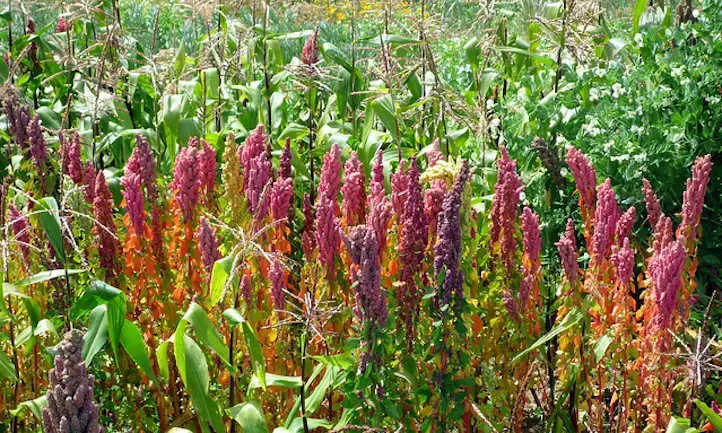
| Common Name(s) | Quinoa, kinwa, kinuwa, goosefoot, pigweed, Inca wheat |
| Scientific Name | Chenopodium quinoa |
| Days to Harvest | 90 to 120 days |
| Light | Full sun, ideal growth in temperatures between 60 F and 90 F |
| Water: | 10-15 inches per growing season |
| Soil | Well-drained, loamy soil |
| Fertilizer | Before planting, treat soil with a full-spectrum balanced fertilizer |
| Pests | Rabbits, flea beetles, beet armyworm, leaf miners, aphids |
| Diseases | Damping off, downy mildew, stalk rot, leaf spot, bacterial blight |
All About Quinoa
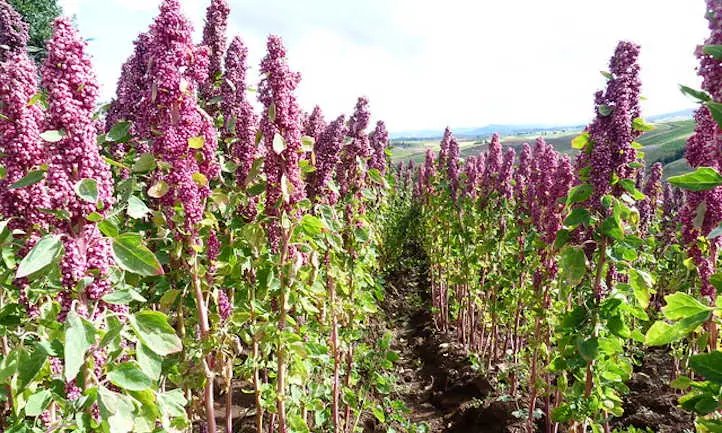
In Peru, Bolivia, and Chile where quinoa’s native habitats reside, the days are short, temperatures are cooler, and the soil is rough. Quinoa can only grow outdoors in USDA zones 4-10. It takes a few days for one quinoa seed to germinate, and each plant has a life cycle of about three to four months. Fruit color varies greatly across varieties, and growing multiple colorful stems will add lots of color to the spot they’re situated in.
Quinoa (Chenopodium quinoa) is commonly known among Quechua peoples as kinwa or kinuwa. Quechua peoples are descendants of the Inca who made contact with conquistadors over 500 years ago, hence its common name, Inca wheat. It is also called goosefoot and pigweed. Leaves grow alternately around a tall stalk that can be green to maroon. Trichomes (or small hairs) cover leaves and stems to keep frost and insects away from plant tissue. Some quinoa varieties are smaller, but make sure you have enough room to house up to a nine-foot-tall plant!
Young leaves and seeds from a quinoa crop are used in cooking food. Leaves are separated from stems and cooked into dishes like spinach. The seeds are cooked much like rice and treated like any other grain. Varieties like Shelly Black quinoa will not only add a pop of dark purple to your garden but will also make your dishes colorful too.
Planting Quinoa
Plant quinoa seeds either indoors in starting trays or direct sow outdoors just after the last spring frost. Both overly frosty and high heat conditions will prevent the germination of quinoa seeds. Quinoa plants prefer to be in the ground or a raised bed. Because they appreciate well-draining soil, containers can be problematic. But it’s possible to plant quinoa in a planter and have a good yield. If you have enough seed to experiment with, try it out.
Plant seeds sparsely in a thin layer in sandy, loamy soil up to one inch deep, a few inches apart if you are sowing outdoors. When seedlings become three to four inches tall, thin them to 18 inches apart or transplant them to separate areas in your garden. Within just a few months you’ll have a tall brightly colored stem and lots of seeds to harvest from your garden.
Care

As long as growing conditions are right for quinoa, cultivating this plant is simple. Whether you start with quinoa seeds or quinoa seedlings, you’ll find preparation is the best way to ensure your success in the garden.
Sun and Temperature
Although quinoa plants like full sun, they naturally prefer shorter days. Grow quinoa in an area with a maximum of 6 hours of sun. This is as much as quinoa can take, and although quinoa plants grow in warmer weather, they cannot handle temperatures above 90 degrees Fahrenheit.
It’s best to start as soon as the last frost passes in higher-numbered USDA zones. Quinoa also cannot handle more than light frost, but as long as temperatures do not dip below 25 degrees Fahrenheit, you’ll keep quinoa growing just fine.
Snap freezes tend to come on quickly, so if there is a freeze predicted for your area outside of the frost date range, try covering with frost cloth. If frost cloth is not an option, a natural fiber sheet will do the trick. Remember to remove the sheet as the sun rises the next day to ensure quinoa plants don’t get cooked by excess heat. If your quinoa plants suffer a little frost damage, they could still produce. Wait a few days to determine how much frost damage has taken place.
Water and Humidity
Naturally, quinoa plants grow in mountainous areas with little irrigation. Most quinoa varieties grow with only 10-15 inches of rainfall in one year. Wait to water until quinoa seedlings have a few leaves in their second vegetative state. When you do this, only water until the soil is moist. A watering can or lightly running hose will do just fine here, although if you have soaker hoses, they’re always a great choice. Avoid watering when your quinoa plant goes to seed as this could produce sprouted seeds.
Always water before the sun has time to rise and heat the soil around your quinoa plant. Water at dusk if you can’t in the morning. Because quinoa is subject to mildews, make sure to water at the base of the plant (never above or on the leaves). Quinoa is drought-tolerant and does not need high humidity to grow well. The Andes, its native habitat is very dry and arid after morning fog has cleared.
Soil
Quinoa grows best in sandy, loamy soil with a little addition of well-cured organic compost matter. Make sure your soil drains well and has a pH of 6 to 8.5. Measure soil with a pH tester if needed. Soil should have a moderate salinity content as well. If you want to ensure the soil is correct for cultivating quinoa, try testing it through your local agricultural extension office. With good soil, you’ll secure a successful harvest.
Fertilizing
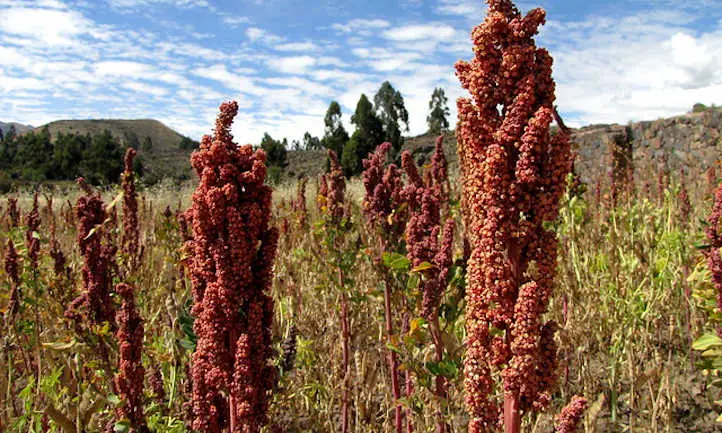
Quinoa plants don’t need fertilizer to thrive, but you can provide a little bit of high nitrogen fertilizer to the soil before planting to help germinated seed roots establish later. About four to six weeks after plants begin to grow, balanced slow-release fertilizer with a 10-10-10 NPK ratio will help fortify root establishment. Don’t fertilize regularly, as too much nitrogen will reduce crop yields.
Pruning/Training
Since quinoa can get very tall, full seed heads cause the stem to get top-heavy and fall over, making it easier for ripe seeds to germinate especially when there are heavy rains. Stake your quinoa. You’ll also enjoy the benefit of being able to harvest all your seeds, rather than having some succumb to rabbits or squirrels that might enjoy snacking on them when they are bent to their level.
No stakes? No problem. Substitute with a sturdy stick, or by piling dirt around the base of the plant for extra support. Stake when there are a few feet of growth before seed heads form.
Quinoa will keep flowering up to the first frost. Because it is prone to self-seed, it’s possible to grow quinoa in your garden year after year without much effort beyond setup. Many quinoa growers recommend sowing a variety with purple leaves to make it easier to tell your quinoa plants apart from weeds like lamb’s quarters. The two plants look highly similar.
Propagation
If you’re willing to allow your quinoa to go to seed, it will self-seed and come back next year. Seeds left too long can blow away, however, and end up elsewhere in your garden, so if you don’t want that, try to gather all the seeds. This is the easiest way to maintain a consistent yield of quinoa because it can take at least 10 plants to get one pound of seed for cooking.
If you’re starting from scratch, try using a damp paper towel in a plastic bag to sprout seeds you purchased, or try sprouting seeds from the grocery store. Afterward, transfer them into starter pots or directly outdoors. Some recommend starting quinoa seeds and seedlings indoors early to be hardened off outdoors before transplanting. Seedlings are notoriously floppy at first but they will perk up over time.
Harvesting and Storing
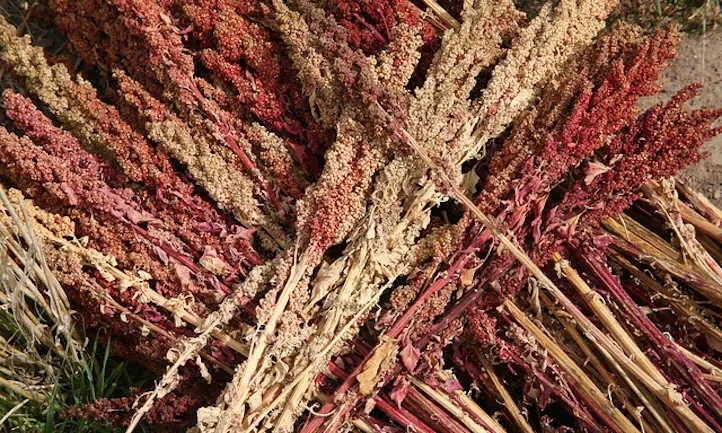
Treat the edible seeds of quinoa much like any grain in the amaranth family. Store quinoa for food years after your harvest.
Harvesting
Quinoa greens are a great addition as a side to your favorite protein. They are ready to harvest once the stem is about 10 inches tall. Don’t take too many leaves, but a few leaves here and there won’t cause irreparable damage. Harvesting leaves will keep the plant from producing too much seed and toppling over.
When it’s time to harvest, you’ll notice all leaves have fallen. Shake the seed head to see if any seeds fall off. Then test a fallen seed to make sure it’s hard enough. If it is, gently scrape the seed head with a gloved hand and gather seeds. Do this when conditions are dry. Seeds sprout or mold on the head if conditions are too wet, making them inedible.
If you live in a damp climate, cut the seed heads off, and dry them upside down in a cool dark place in your house with a tray underneath to catch any seeds that fall off. These can be collected and sprouted next year, or stored for food like you would a grain.
After the seeds have been washed in water, lay them out to dry. Dehydrate them in direct sunlight, or near a dry heat source. Drying ensures seeds don’t mold. Winnow seed from the chaff by setting up a fan in front of you with a tray below to catch quinoa seeds. Use two gloved hands and rub seeds and chaff between your hands. As the lighter husks separate from seeds, the air from the fan pushes them away from where seeds fall. It’s best to do this process outdoors or in an area where cleanup won’t be much of an issue. If you do this inside, you’ll be cleaning up chaff for ages.
Storing
To store leaves for later, julienne them and keep them in a freezer bag for up to one month. Leaves keep in the refrigerator for a few days. Seeds keep in an airtight container in a cool, dark place for up to three years. They are a great addition to any gluten-free dish; check out an article online with a recipe to learn how to cook it.
Troubleshooting
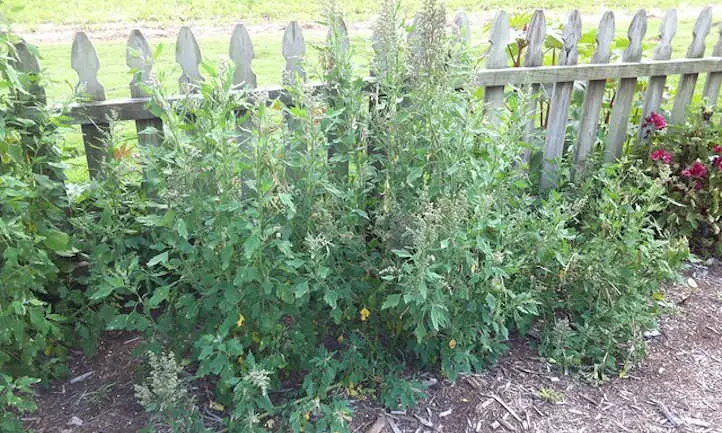
Because the natural habitat of quinoa is so specific, those growing in zones with a very different climate could have issues. Here are a few of the things that can affect your quinoa crop.
Growing Problems
Too much water too early rots seeds before they can germinate. It’s important to wait until your quinoa plant has grown a few inches in height to water. Since quinoa is drought tolerant, if the fruits get too wet they sprout on the stem, which makes them inedible.
If quinoa plants get too hot or too cold they yield less. It’s best to wait until the last spring frost has passed for planting quinoa in the garden. Quinoa gets too warm with too much light. Try shade cloth in this instance to keep seed production at a normal rate. Staking is essential in certain varieties, as some grow up to 9 feet. Non-staked quinoa could become host to pests.
Pests
Rabbits and birds munch on early quinoa seeds in your garden. If leaves and seed heads are eaten en masse, try adding a small cage around the plants to keep that protein source to yourself. Check around your quinoa plants to be sure there aren’t any rabbits trying to make a nest there. If you find them there, try planting elsewhere, or get a dog or barn cat that will keep the rabbits away.
Flea beetles eat the leaves and seeds of quinoa plants. For these, try a sticky trap to catch them as they jump. An organic insecticide will do the trick if this doesn’t solve the problem. Diatomaceous earth on the soil will keep any hard-shelled insects out.
Beet armyworms (or Spodoptera exigua) are small caterpillars that feed on quinoa plants in preparation for pupation. They eventually grow into moths that continue the cycle. Neem oil keeps beet armyworm off your plants. Leaf miners are another larval insect that gets in between the skin of a leaf and its interior to eat the plant matter and make little wayward tracks as they go. Spinosad kills leaf miners when they consume plant matter you’ve sprayed with a solution.
Aphids are small mite colonies that can cause leaf collapse if they are left to their own devices. Ladybugs are their natural predators. Try setting a ladybug colony loose on your quinoa if aphids try to take over, or spray your plants with a commercial organic insecticidal soap. Row cover is an option for quinoa protection in cases of all of the above pests.
Diseases
Many of the diseases quinoa deals with come from overly wet conditions. Damping off is one of these that specifically affects quinoa seedlings. Stem lesions occur and kill seedlings before new growth can take place. When you sow seeds, try using a sanitized medium to prevent damping off. Seedlings that succumb to damping off should be discarded. Avoid composting discarded plants to prevent the spread of one of the many pathogens that causes damping off.
Downy mildew shows when the leaves of your plant have discolored, greyish spots. To avoid this mildew, water your quinoa at its base and don’t water too much. Early treatment with a copper-based fungicide can help with control. If downy mildew causes leaf collapse, pull out the entire plant and discard it.
If it’s late in the growing season, and conditions are too cool and wet stalk rot can set in. This disease is caused by the fungus Phoma exigua var. foveata and appears as a brown glossy abrasion on the stem of quinoa plants. Good sanitation and drainage are key here, as debris on the soil’s surface can hold excess moisture and too much water in the soil can encourage fungal growth. Treatment with a plant fungicide such as liquid copper or a biofungicide like Serenade Garden Disease Control should reduce symptoms briefly, but removing infected plants and disposing of them reduces the likelihood of spread.
Passalora dubia or passalora leaf spot of quinoa (a fungus) and bacterial blight are other pests that set upon plants when soil temperatures are too cool and soil content is too wet. These are also prevalent when watering is done from above and too often. Spray leaf spot affected plants with fungicides containing sulfur or copper octanate to stop infections from spreading. Again, overly affected plants must be removed and discarded before planting again.
Frequently Asked Questions
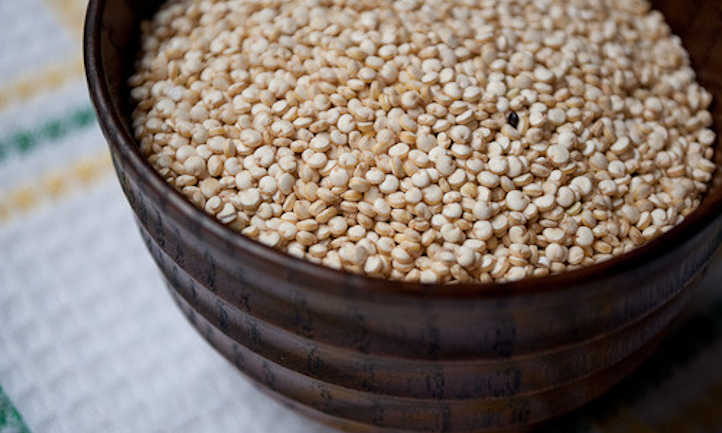
Q: Is quinoa easy to grow?
A: Yes. With the right conditions, it’s very easy to grow quinoa and enjoy it year after year.
Q: How long does it take to grow quinoa?
A: Quinoa seeds sprout in a few days, and seed heads can be harvested anywhere from 90 to 120 days from germination.
Q: Can you grow quinoa in the United States?
A: Yes. Quinoa will grow in the United States (in zones 4-10), but some zones have weather that makes the window for growing smaller than other areas. Sow seed at the right time in the right place, and you’re set!

